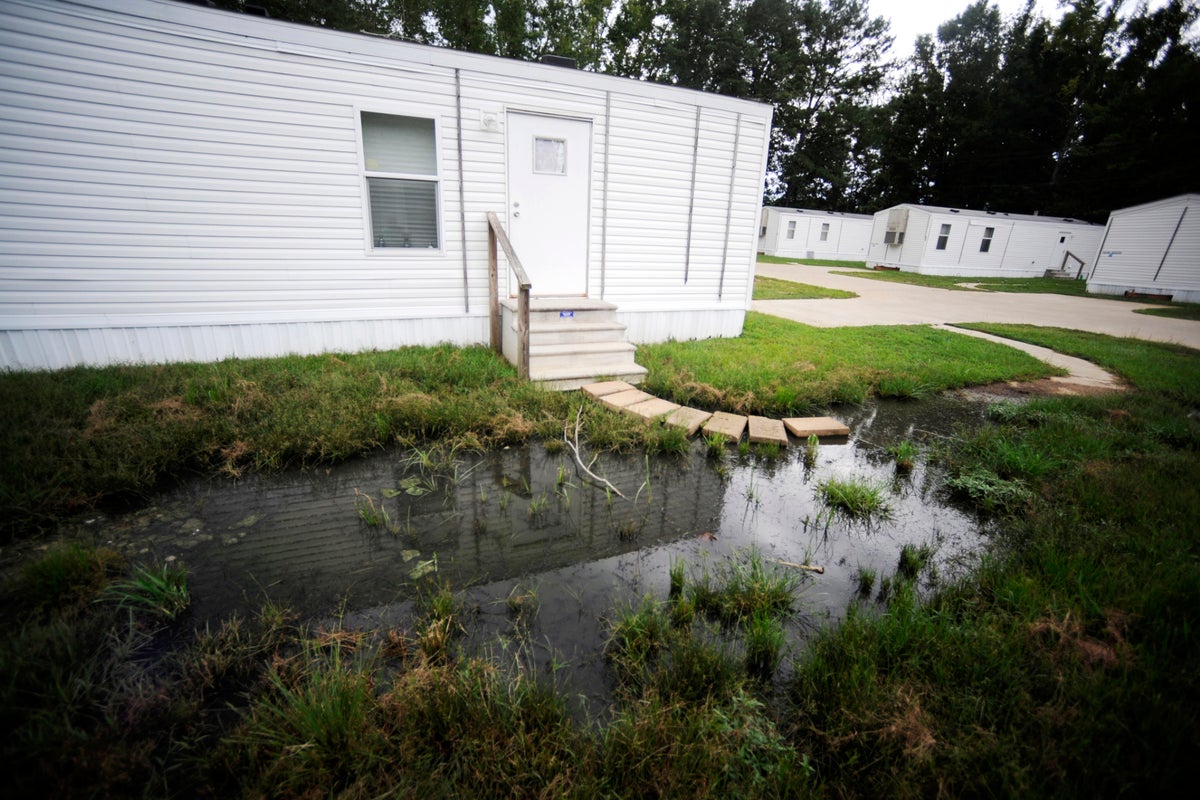
When there's heavy rain, human waste from the pond of sewage across the street from Charlie Mae Holcomb’s home covers her front yard in rural Alabama. She can’t remember how many times she’s had to rip the flooring out of her small brick house because raw sewage backed up out the pipes.
Holcomb lives in Hayneville, a community in Lowndes County of fewer than 1,000, where roughly one-third of people live in poverty and about 85% are Black. The 73-year-old has become an unofficial spokeswoman for people living with poor drainage and disgusting sewage problems that go back generations.
“It’s not just mine, it’s almost all the people. They just won’t talk,” said Holcomb.
The heads of the U.S. Environmental Protection Agency and U.S. Department of Agriculture came to Lowndes County to announce Tuesday a pilot program to help rural communities that face serious sewage problems like those here. Inferior sewage systems allow waste to back up and pool, threatening public health and degrading basic dignity.
Federal officials said the new pilot will help 11 communities assess their sewage problems, plan improvements and receive the financial and technical help to make those plans real. In addition to Lowndes County, the effort will help two West Virginia counties and the San Carlos Apache Tribe in Arizona, among other areas.
“The America that we all believe in is a land of opportunity. But for historically marginalized communities from Alabama to Alaska, that opportunity is stolen when basic sanitation doesn’t work – exposing adults and children to backyard sewage and disease,” EPA Administrator Michael Regan said in a statement.
More than 2 million people in the U.S. don’t have indoor plumbing and even more live with inadequate systems for carrying away human waste and stormwater, the agency said. The EPA said places that have been “left behind for far too long” will be the program’s focus. The Biden administration said billions of dollars from the infrastructure law will help provide grants and loans for water improvements and it wants to expand this help.
Lowndes County was lush cotton country where plantation owners got rich off the labor of enslaved Black people before the Civil War; sharecropping ensnared the descendants of the freed slaves in the decades after. The county, where old plantation homes still dot the landscape, became a center of the struggle for voting rights and civil rights in the 1960s.
Now, Lowndes is a poor place in a poor state. The same sewage problems have been cropping up ever since Holcomb moved to Pine Street in 1987, and she’d sick of the government’s inaction.
“I want them to fix it. I would love to see them move that lagoon. Find somewhere else to put it,” she said. “If you have all the windows down sometimes it’s just like the sewage system is in your house.”
Many residents in the county aren’t connected to a centralized sewer system. Regular septic systems often don’t function properly because the soil is so dense. In some places, sewage stands outside of homes, and the smell of waste permeates the air at times.
Native Americans and people of color are particularly likely to live without proper sanitation services, according to a 2019 report by the nonprofit DigDeep. The head of the EPA’s office of water, Radhika Fox, was CEO of the US Water Alliance at the time and has long focused on inadequate infrastructure. The report said many communities didn't benefit from the infrastructure investments the U.S. made previously, creating a “hidden water and sanitation crisis.” The problem is a multi-billon dollar burden, the group says.
Catherine Flowers, founder of the Center for Rural Enterprise and Environmental Justice, who has focused on how sewage issues disproportionately impact poor, rural areas, said the new pilot program is a big step for people who live in places like Lowndes County.
“Hopefully out of what is getting ready to happen we're going to find remedies so these things will not continue to happen,” she said.
___
Phillis reported from St. Louis.







